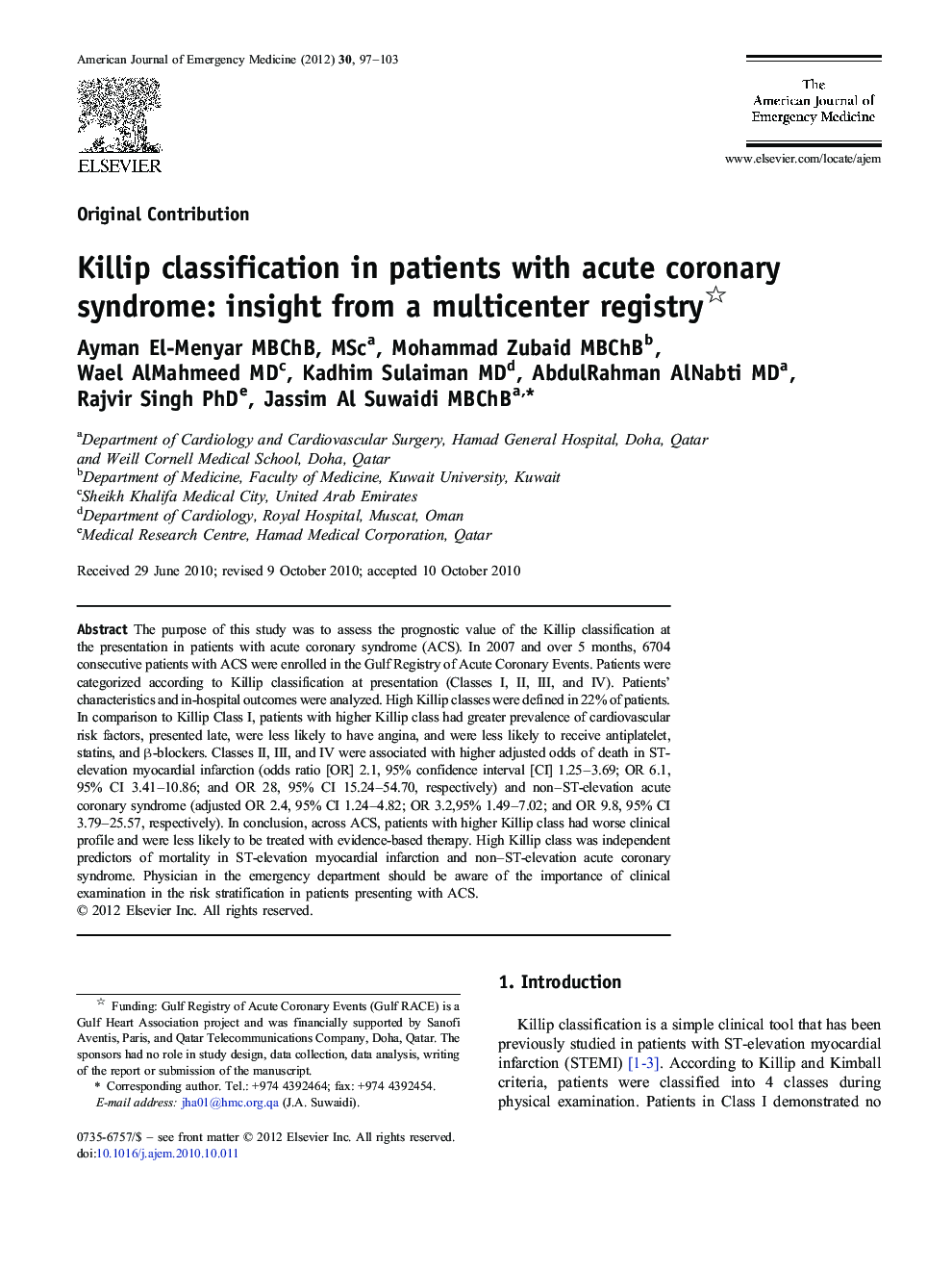| کد مقاله | کد نشریه | سال انتشار | مقاله انگلیسی | نسخه تمام متن |
|---|---|---|---|---|
| 3225753 | 1588143 | 2012 | 7 صفحه PDF | دانلود رایگان |

The purpose of this study was to assess the prognostic value of the Killip classification at the presentation in patients with acute coronary syndrome (ACS). In 2007 and over 5 months, 6704 consecutive patients with ACS were enrolled in the Gulf Registry of Acute Coronary Events. Patients were categorized according to Killip classification at presentation (Classes I, II, III, and IV). Patients' characteristics and in-hospital outcomes were analyzed. High Killip classes were defined in 22% of patients. In comparison to Killip Class I, patients with higher Killip class had greater prevalence of cardiovascular risk factors, presented late, were less likely to have angina, and were less likely to receive antiplatelet, statins, and β-blockers. Classes II, III, and IV were associated with higher adjusted odds of death in ST-elevation myocardial infarction (odds ratio [OR] 2.1, 95% confidence interval [CI] 1.25–3.69; OR 6.1, 95% CI 3.41–10.86; and OR 28, 95% CI 15.24–54.70, respectively) and non–ST-elevation acute coronary syndrome (adjusted OR 2.4, 95% CI 1.24–4.82; OR 3.2,95% 1.49–7.02; and OR 9.8, 95% CI 3.79–25.57, respectively). In conclusion, across ACS, patients with higher Killip class had worse clinical profile and were less likely to be treated with evidence-based therapy. High Killip class was independent predictors of mortality in ST-elevation myocardial infarction and non–ST-elevation acute coronary syndrome. Physician in the emergency department should be aware of the importance of clinical examination in the risk stratification in patients presenting with ACS.
Journal: The American Journal of Emergency Medicine - Volume 30, Issue 1, January 2012, Pages 97–103